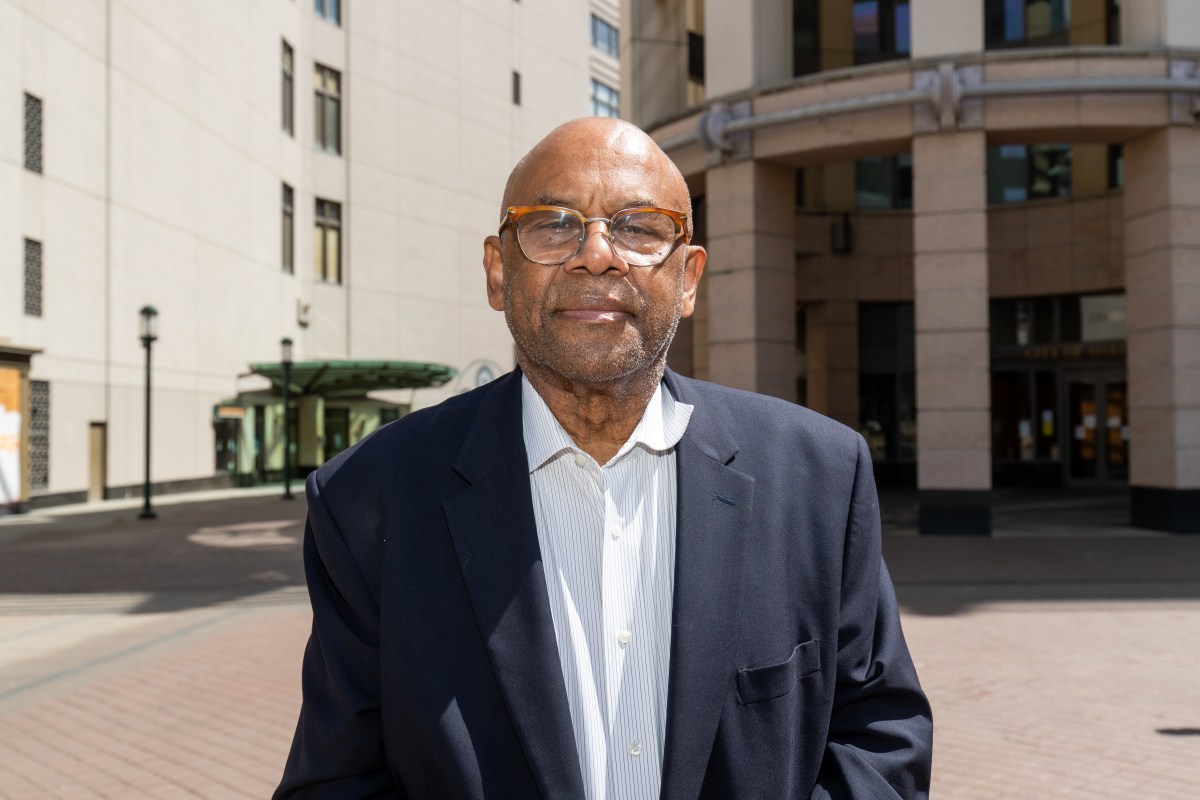2021 has been a difficult year for Oakland as the city grappled with some of its biggest problems and was reminded of several past tragedies.
Gun violence shook the town in 2021, and attacks on Asian residents heightened public safety concerns in Chinatown and surrounding neighborhoods. Similar to other U.S. cities, the number of homicides soared. By mid-December Oakland reached 133 killings, the most in a year since 2006. At the same time, residents and elected officials have been searching for better ways to prevent violence and heal community trauma.
The past 12 months also saw significant developments in the Oakland A’s plan to build a stadium at Howard Terminal, the hiring of a new police chief who prioritized achieving compliance with federal reforms, and a new commission’s first time redrawing City Council and school board districts, following release of the 2020 U.S. Census.
City meetings continued to be held virtually, as the coronavirus pandemic pressed on. The virus as of this month has claimed the lives of 435 Oaklanders, according to the county health department, while 75% of the city’s population is now fully vaccinated.
This year also marked the anniversaries of three major events: 30 years since the Oakland Hills firestorm, 10 years since Occupy Oakland, and five since the Ghost Ship warehouse fire.
Here’s a look back at the big stories coming out of City Hall and the police department.
This year saw intense debate over the police department’s budget, role
Calls to “defund” and “reimagine” public safety spilled over from 2020, when mass protests took place nationally over the murder of George Floyd by a Minneapolis police officer.
Oakland set up a Reimaging Public Safety Task Force whose 17 members—some self-identified police abolitionists and others residents of high-crime neighborhoods who work closely with the police—spent weeks debating the best ways to achieve a goal of cutting $150 million from OPD’s annual budget, without compromising public safety. A total of 88 recommendations were made, including altervies to policing, ways to strengthen prevention programs to address root causes of violence, and policies to improve the quality of policing.
The city also created a new non-police emergency response program called Mobile Assistance Community Responders of Oakland, or MACRO. This pilot program is currently being set up within the Oakland Fire Department. MACRO was part of the city’s goal to “reimagine” public safety, and designed to prevent police escalation of certain situations by using civilian workers, some with medical and mental health training, to respond to certain types of non-violent 911 calls.
After intense budget hearings, the City Council in a 6-2 vote approved a budget for the 2021-2022 and 2022-2023 fiscal years that did not “defund” the police. The Oakland Police Department’s budget increased by approximately $38 million, although it was a smaller amount than Mayor Libby Schaaf’s proposed budget called for and resulted in the elimination of about 50 police officer positions that were filled mainly through overtime.

City Council directed $18.5 million over the next two years to expand the Department of Violence Prevention, which was established in 2017, and employs civilian violence interrupters and life coaches who work with people traumatized by violence. MACRO also received $6.2 million, under the city’s spending plan.
By the fall, however, councilmembers were faced with an unexpected drop in OPD’s ranks. Although the budget funded 737 police positions, a wave of officer resignations and retirements left the department with 676 sworn officers, below the threshold for the city to continue collecting a parcel tax which raises millions to fund police, fire and violence prevention programs. In September, City Council voted to add another police academy to boost police staffing, and in December added another two academies to train police recruits and fill 60 vacant positions.
As the year comes to an end, public safety is already playing a major role in shaping the 2022 mayor’s race, and three councilmembers have already announced they’re running alongside a field of others that is only expected to grow.
The Oakland police again inched closer to emerging from federal court oversight
At the Oakland Police Department, Deputy Chief LeRonne Armstrong, who grew up in West Oakland, realized his dream of becoming the city’s police chief in February. Armstrong was the first OPD chief hired under a new selection process. He was one of four finalists interviewed publicly by the civilian Police Commission, who sent their selections to Mayor Schaaf.
Schaaf had the option of rejecting the candidates, but hired Armstrong, a 22-year OPD veteran, who had the backing of civil rights attorneys and others overseeing the police department’s decades-long reform effort. The new chief joined OPD as a rookie around the same time the Riders scandal involving officers accused of beating and planting drugs on West Oakland residents resulted in a 2003 court settlement, which began federal oversight of OPD by a judge and monitoring team.
Armstrong vowed to bring OPD closer to emerging from federal oversight, after his predecessor, Anne Kirkpatrick, was fired in February 2020 after the police department slid backward on reformst. OPD was inching closer to winding down the decades-long oversight program in August, six months into Armstrong’s tenure, when civil rights attorneys John Burris and Jim Channin—who represented the plaintiffs in the Riders case—wrote in court briefs to the federal judge that OPD had made significant progress.
At a court hearing in September, U.S. District Judge William Orrick applauded OPD’s recent reform achievements but noted that a law firm hired by the city was days away from completing an investigation of an Instagram account that spread sexist images, racist language and contempt for OPD policies meant to prevent corruption and police brutality.
Orrick made it clear he would not find OPD fully in compliance with the negotiated settlement agreement if the investigation uncovered “racism, misogyny and a culture of rot” within OPD.

In January 2021, The Oaklandside broke a story about the existence of the social media account, and other questionable online conduct, which prompted the OPD investigation. The outside investigators’ conclusions were not encouraging. Their report found an ex-Oakland police officer who was fired for a police shooting had created the account, about 30 current and former OPD officers appeared to follow the page, and that the Oakland Police Department, at all levels, “took much too long to recognize the bigoted and corrosive nature” of the Instagram posts.
We subsequently reported that four of the five officers involved in the fatal shooting referenced in the investigators’ report had found jobs in other law enforcement agencies.
OPD and Oakland officials must next appear before Judge Orrick on Jan. 5 to discuss the status of the federal reform program, but the department has recently been praised by its independent monitor who says OPD is making steady progress on reforms.
Howard Terminal or bust: Negotiations over waterfront ballpark intensified

The Oakland A’s, the city’s last professional sports franchise, added a new slogan: “Rooted in Oakland” became “Howard Terminal or Bust.” No longer seeing the Coliseum as a viable option, and having failed to build near Laney College, the team has set its sights on constructing a 35,000-seat stadium, along with housing, a hotel, and retail, commercial, and open space at the Port of Oakland terminal on the waterfront.
It is the largest land use proposal currently in the city’s development pipeline.
The A’s plan hit a snag in 2020, due to the coronavirus pandemic, but negotiations intensified this year, after A’s President Dave Kaval made public the team’s term sheet in April. While the A’s plan to privately finance the ballpark and neighboring development, the team asked the city to form tax districts to help pay for infrastructure costs, one at Howard Terminal and another that spans Jack London Square.
In July, the City Council approved a non-binding term sheet with amendments. City officials rejected the idea of forming a tax district outside of the project’s footprint and could not do it without Alameda County opting in. The county Board of Supervisors in October voted to declare an intent to join the city in forming a special infrastructure financing district. Property tax generated from within the district would pay for roadway improvements and adding sewer, water, and electrical lines.
Those votes came under pressure from Major League Baseball Commissioner Rob Manfred, who has said he’s not certain there is a path to build a new stadium in Oakland, and from A’s ownership, who spent several days in 2021 touring sites in the Las Vegas region, where they’ve threatened to move the team.
Oakland released a draft environmental impact report in March and the final report was released Dec. 17.
The A’s say the clock is ticking because the team’s lease at the Coliseum is set to expire in 2024. With no anchor tenant at the 120-acre property owned jointly by the city and A’s (who purchased Alameda County’s half share in 2019), the City Council has entered into an exclusive negotiating agreement with African American Sports and Entertainment Group, a collection of local Black business leaders, who want to revitalize the site and provide entertainment, shopping, and housing for East Oakland residents.
In the New Year, Oakland’s electoral map will be reshaped
For the first time, the independent Oakland Redistricting Commission was in charge of redrawing City Council and school district lines, after years of councilmembers having the final say. The new process followed release of data from the 2020 U.S. Census, which showed Oakland had grown by 50,000 residents, and that the proportion of Hispanic and white residents increased, while the number of Black residents continued to decline.
The new boundary lines for Districts 1-7 will be used in the November 2022 election. Candidates are already lining up to replace Schaaf, who is termed out, and the mayor’s race will have an effect on the District 4 and 6 council election, since sitting councilmembers Sheng Thao and Loren Taylor are among a growing list of mayoral candidates that also includes District 7 Councilmember Treva Reid. The redistricting commission is holding its final meeting on Dec. 30.

